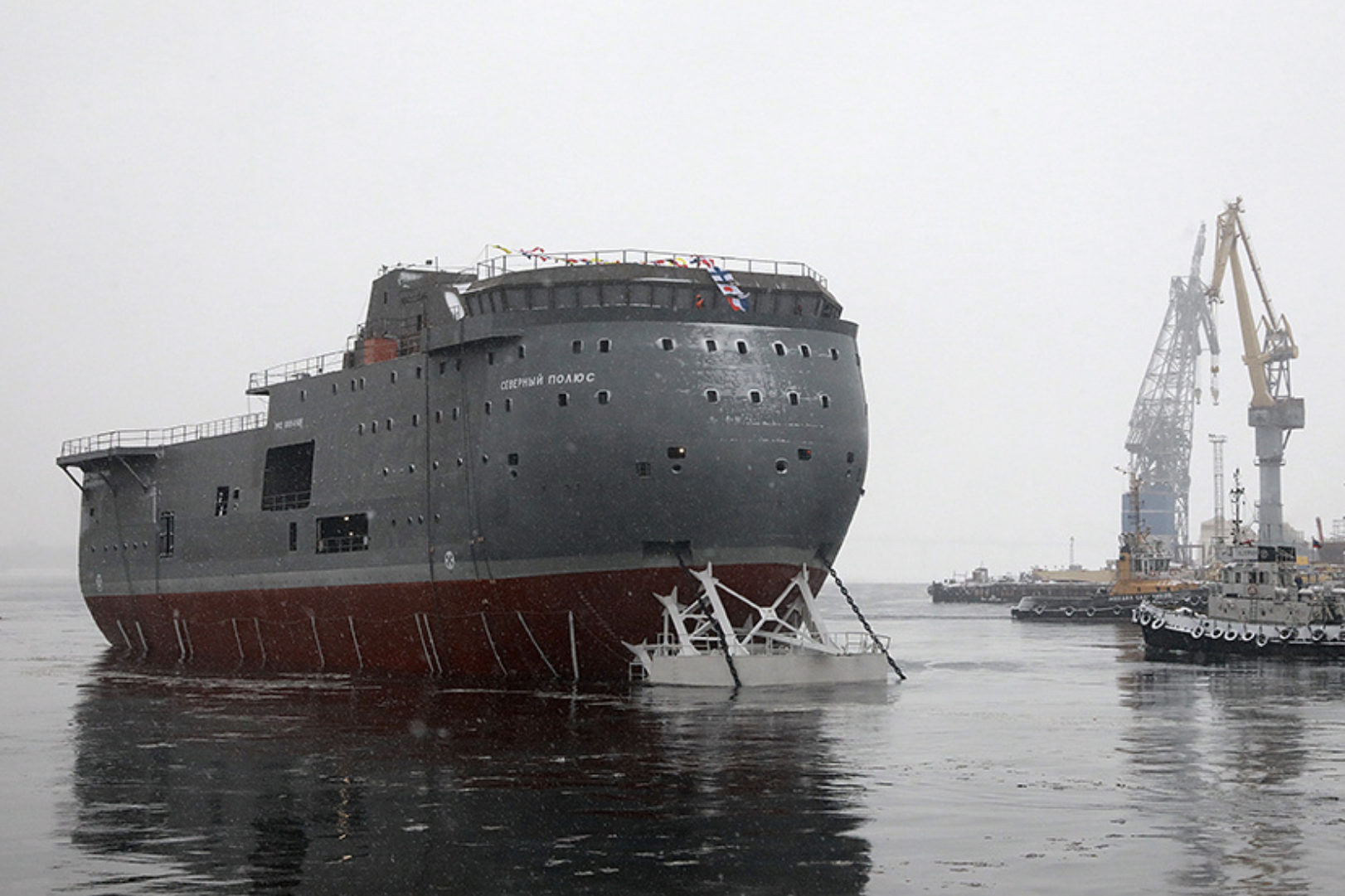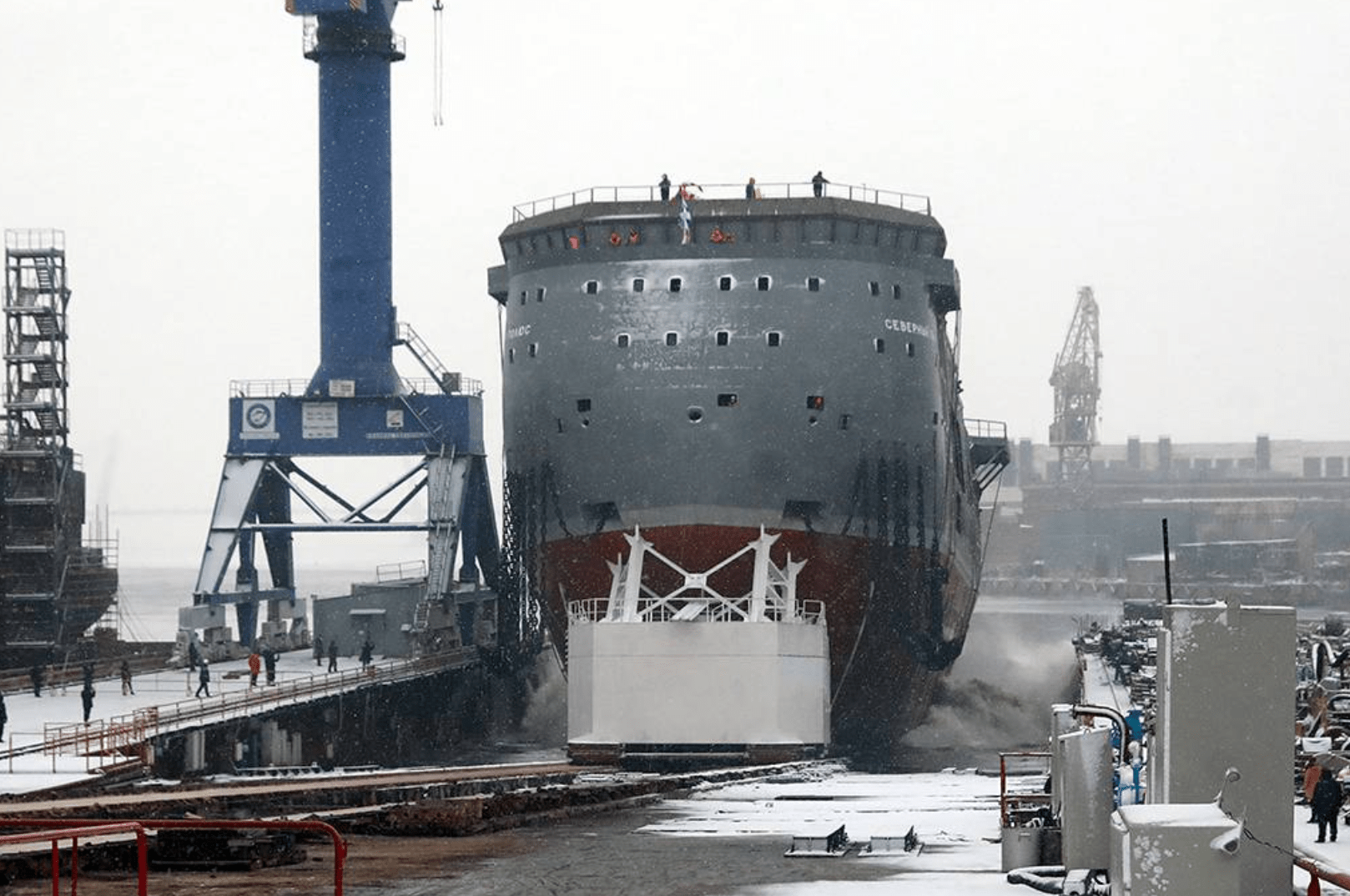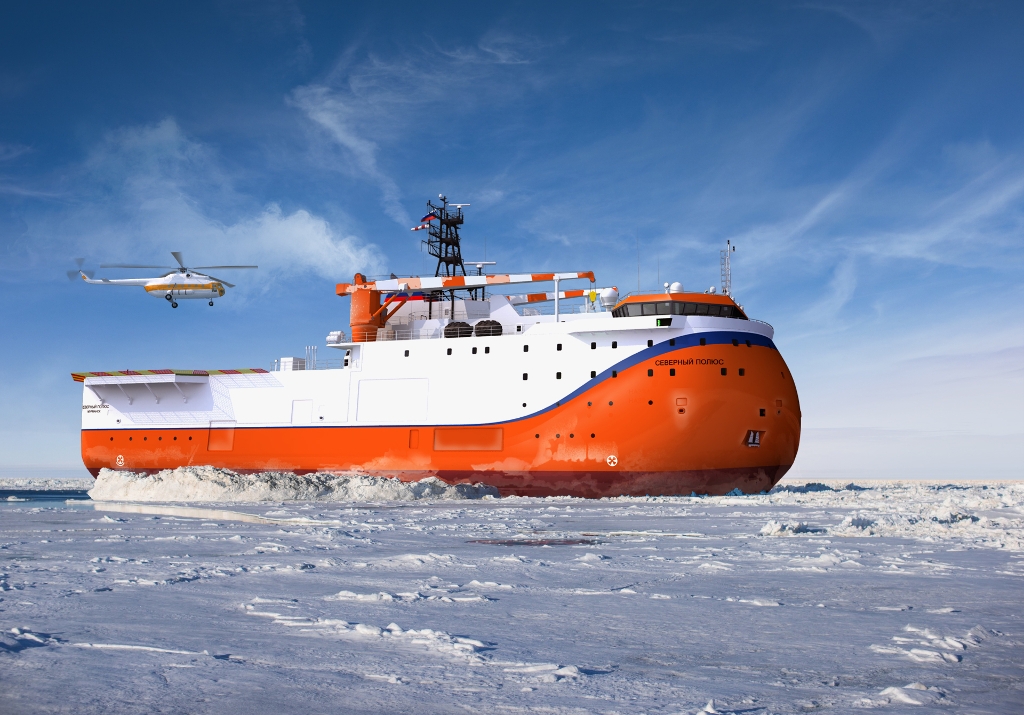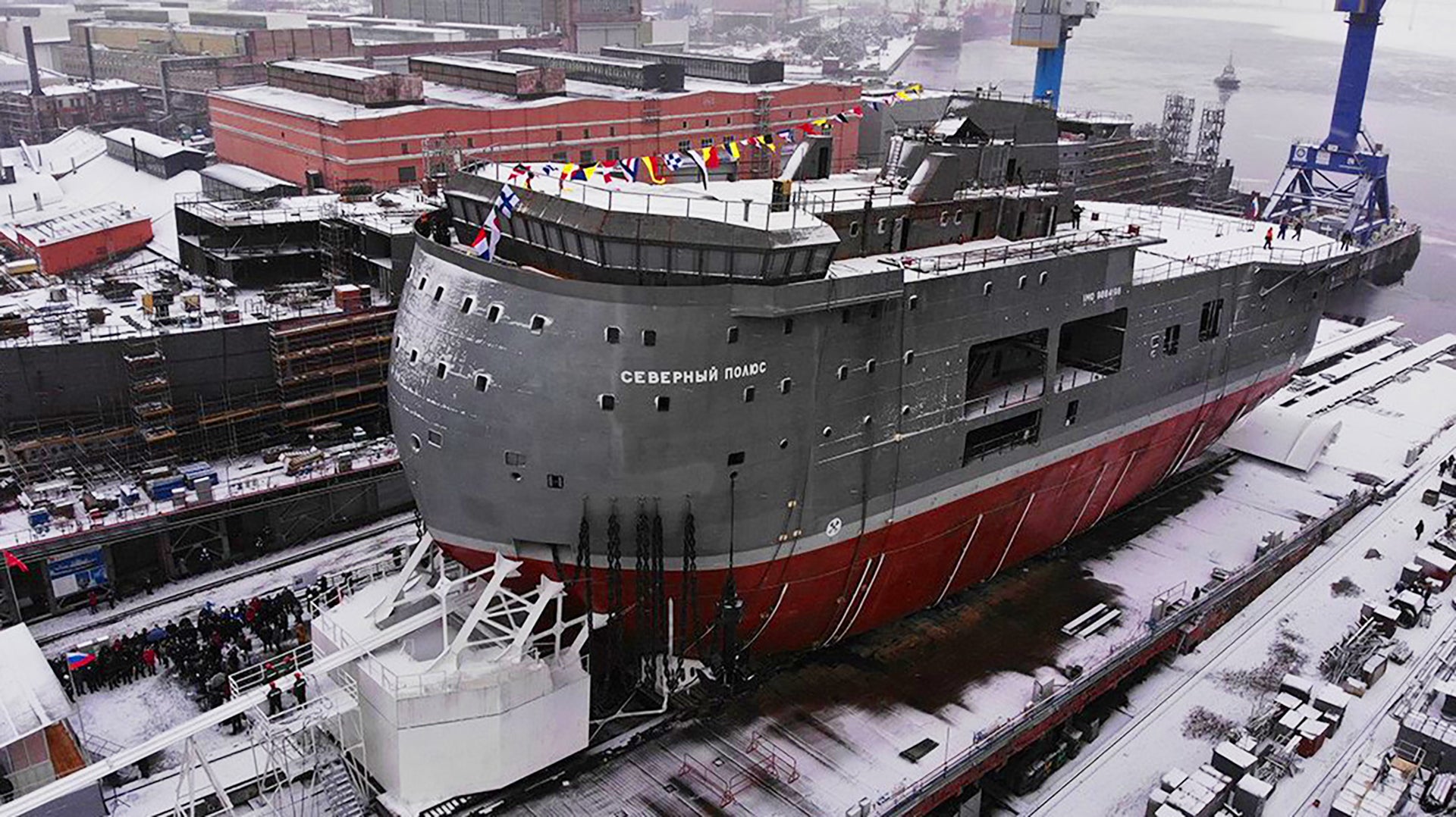As part of the country’s ever-increasing focus on the Arctic region, Russia has launched a new Arctic research vessel, named the North Pole. The Project 00903 ship is described as an “ice-resistant self-propelled platform” and is intended to drift through the waters of the frozen north, conducting geological, sonar, geophysical, and oceanographic surveys. It is also far from pretty.
The vessel’s distinctly egg-shaped hull, constructed from special high-durability steel, stems from its requirement to deal with light ice, being propelled along at a speed of around 10 knots. This ship is not an icebreaker, however, and its reinforced hull is designed to be better able to shrug off ice rather than plow through it. Instead, its overall design has been optimized for endurance and autonomy.

The Admiralty Shipyard in Saint Petersburg, which is part of Russia’s United Shipbuilding Corporation, launched the North Pole on December 18, almost exactly two years after construction began. The vessel has been built for the Federal Service for Hydrometeorology and Environmental Monitoring, better known as Roshydromet, at a reported cost of $100 million. It is being run as a joint project between Roshydromet and Russia’s Arctic and Antarctic Research Institute.
Measuring 276 feet long by 74 feet wide, and with a displacement of 10,225 tons, the North Pole is intended to be the first vessel of its kind to be permanently based in the high Arctic.

Previously, Russia, and before that the Soviet Union, made use of drifting ice stations for supporting Arctic research teams. These were built on naturally occurring ice packs or glacier fragments. Beginning in 1937, a total of 40 expeditions had been run, normally in the months of September to October. One of these ice stations provided the U.S. intelligence community with a rare windfall when, in May 1962, under Project Coldfeet, they investigated an abandoned Soviet research station high in the Arctic.
However, the effects of global climate change since the early 2000s means that these kinds of stations are no longer a practical proposition since solid ice is increasingly hard to find.
The last Russian ice station to serve for any length of time was North Pole-40, established in October 2012, but this had to be evacuated in May 2013 when its ice floe began to break up. The scientists were eventually rescued by a nuclear-powered icebreaker. A follow-up attempt to set up an ice station in 2015 was abandoned after only four months.
So, now Russia has turned to the “ice-resistant self-propelled platform,” or Project 00903, which will be able to venture into the Arctic region under its own power, or with the help of an icebreaker, before beginning its “autonomous” mission. In this case, the autonomy refers to being able to operate independently of resupply for extended periods of time, enabling researchers to study the Arctic region for up to two years at a time, without having to dock in port.

Since it will be underway for such long periods, the North Pole will be supplied either by passing icebreakers, or by air, and there’s provision for a permanently embarked Mi-8 helicopter. This will be a Mi-8AMTSh-VA version that has been specially tailored for operations in the Arctic environment. In the future, the ship’s helipad could also support variants of the Mi-38 and, perhaps, even more advanced rotary-wing aircraft.

When construction work on the new ship began, the Barents Observer quoted Natalia Radkova, Deputy Director of Roshydromet, describing the North Pole as “a unique, comfortable and reliable drifting station that undoubtedly will open a new page in our national polar history.”
While the North Pole will be operated as a scientific research vessel, its strategic relevance is clear. The same retreating ice caps that have made the previous ice stations impractical are opening up new sources of energy wealth in the region, which is fast becoming a new focus of great power rivalry.
There are certain potential military applications to the kind of research the North Pole will supposedly be doing, too. Underwater surveys of the Arctic region, for example, could help provide valuable information in support of increased Russian Navy activities, both above and below the water. Russia, and for its part, the U.S. Navy, is also engaged in developing a system to support enhanced monitoring of environmental changes in the Arctic, officially for scientific purposes.
The new Arctic research vessel will very likely help Russia extract more oil and gas from under the Arctic Sea or from previously ice-bound islands, which will have its own geostrategic implications. Already, the Russian military is busily increasing its capabilities in the region — including forward operating locations — to potentially defend thousands of miles of coastline from the sea, land, and air.
Moscow’s exclusive economic zone in the Arctic provides oil, gas, and fishing rights, and these, too, will be both exploited and defended, especially as Russian claims are increasingly disputed by Canada, Denmark, Norway, and the United States.
Beyond its proposed mission set, Russia has basically built a very long-endurance multi-purpose floating platform that can survive the unique environmental challenges of the Arctic. So, the idea that the type could potentially have more extensive military applications sometime in the future is valid. In that regard, the North Pole could eventually help support the activities of a growing fleet of Arctic-oriented Russian vessels, ranging from the world’s largest and most powerful icebreaker to the Project 23550 Ice class patrol ships, which are essentially polar corvettes.
The Arctic is clearly assuming ever greater importance to Moscow and it looks like the North Pole research vessel could play an important role in this new dynamic.
Contact the author: thomas@thedrive.com
